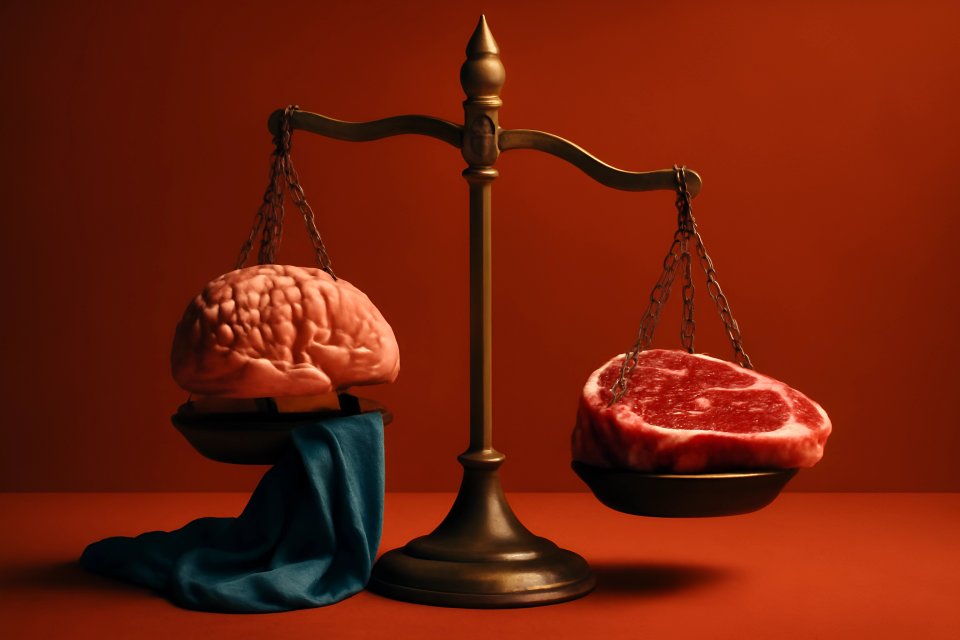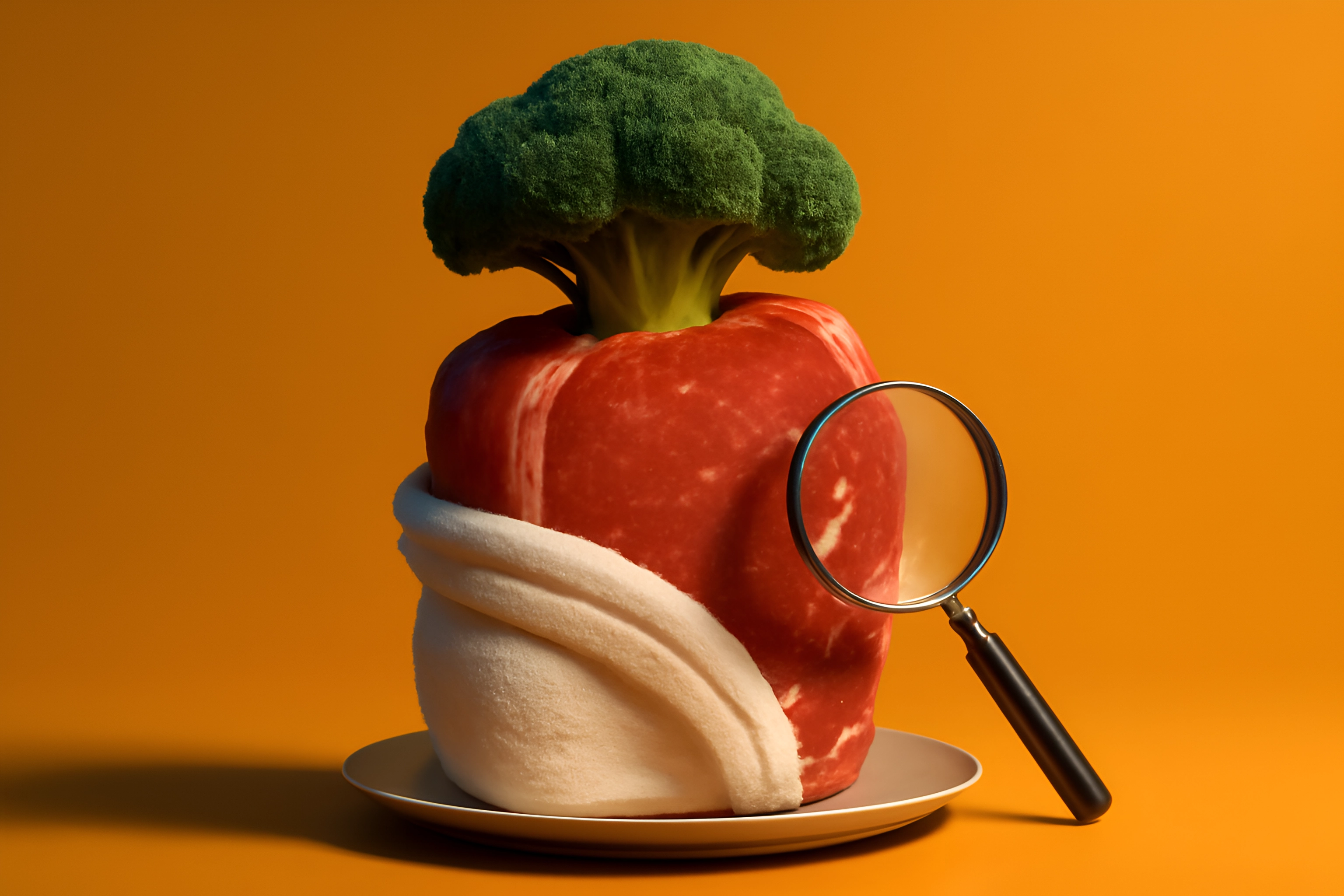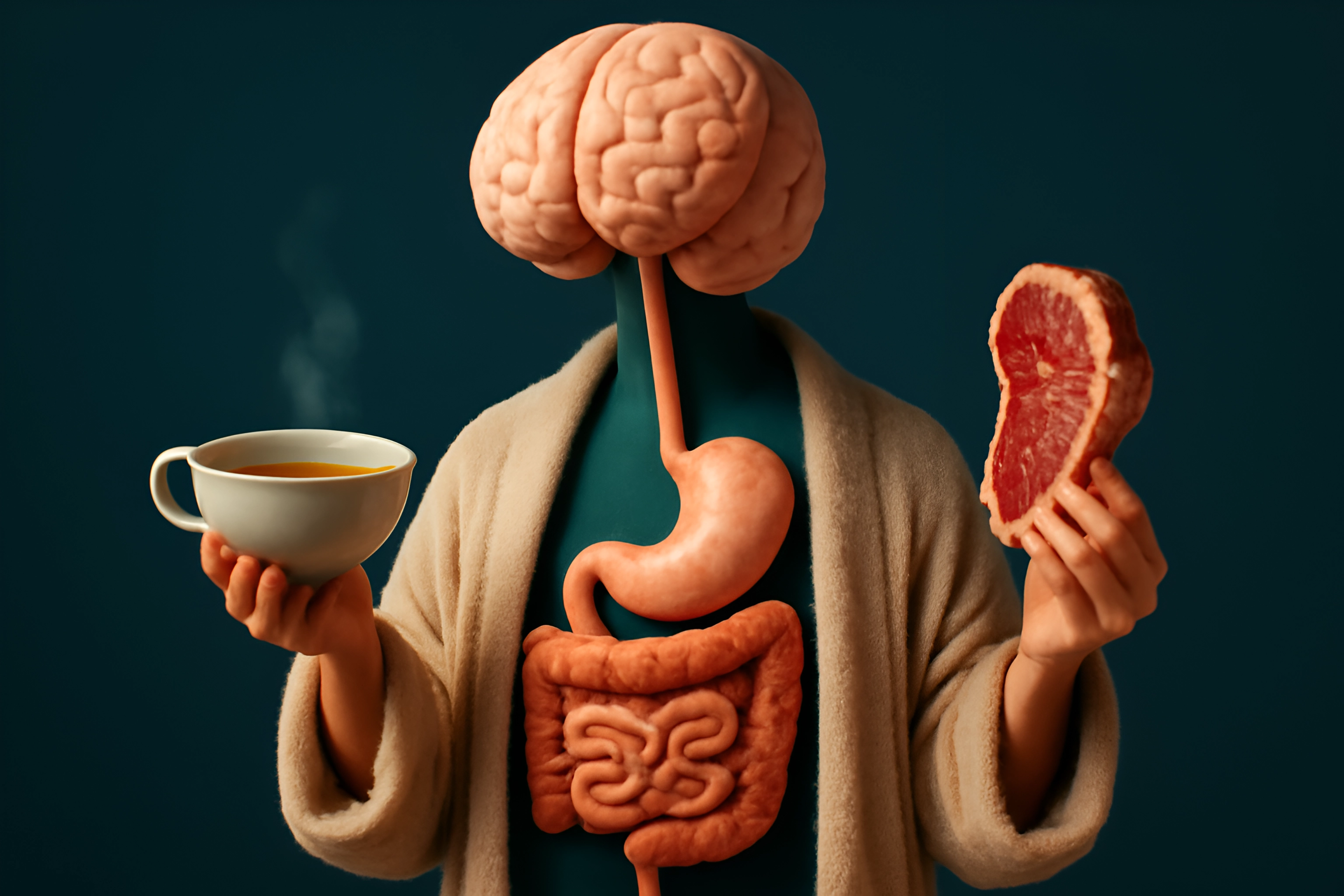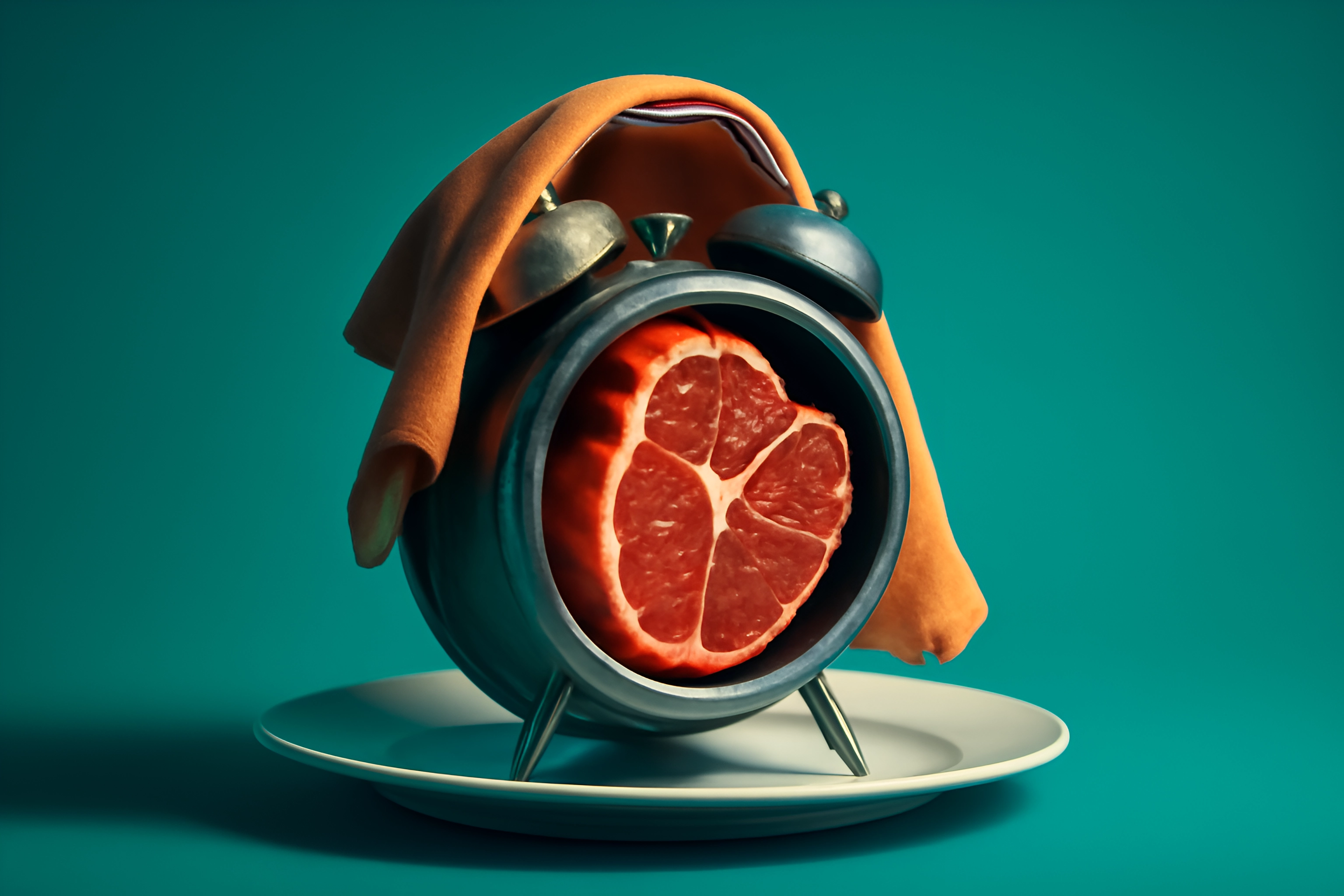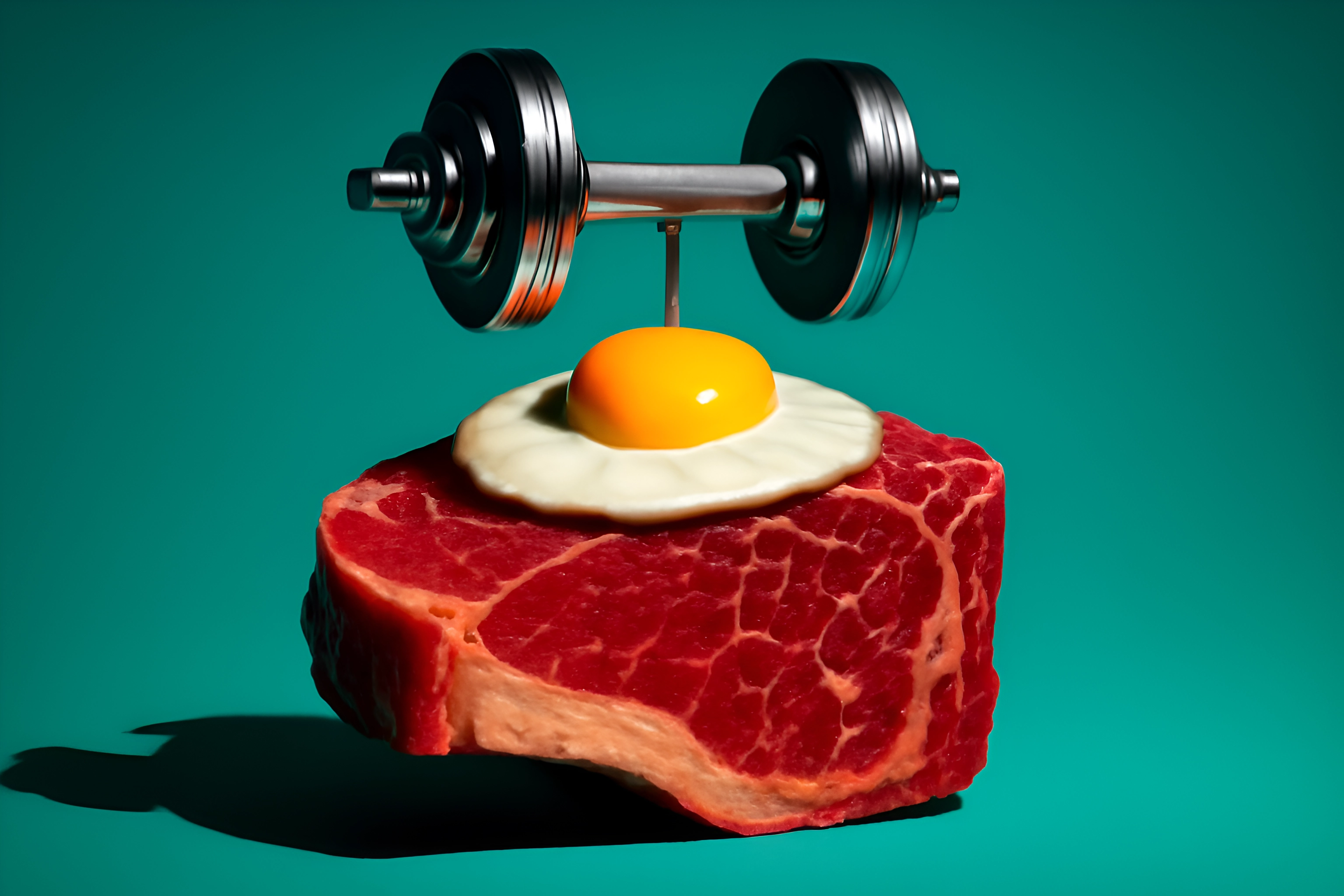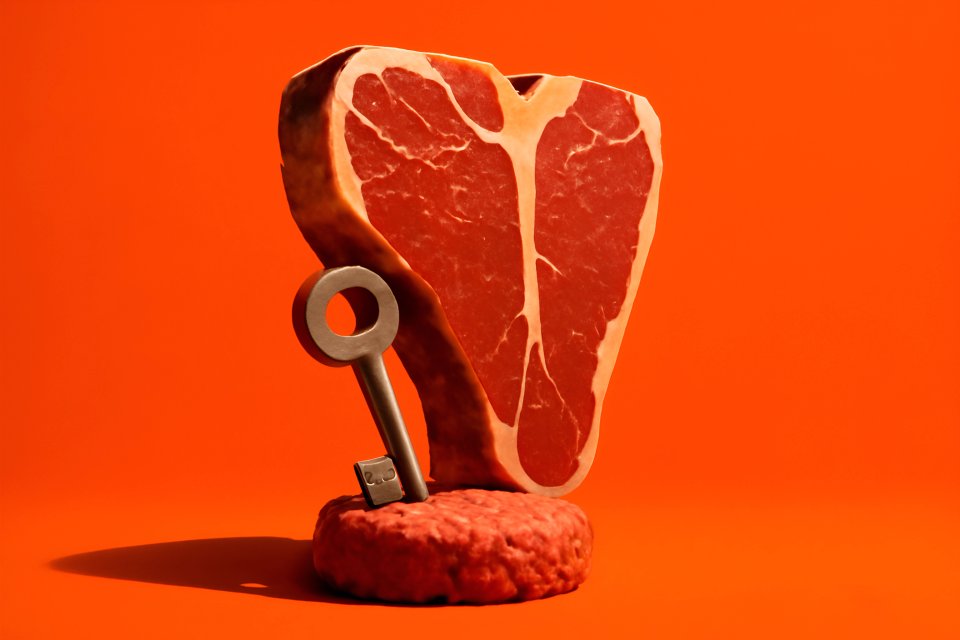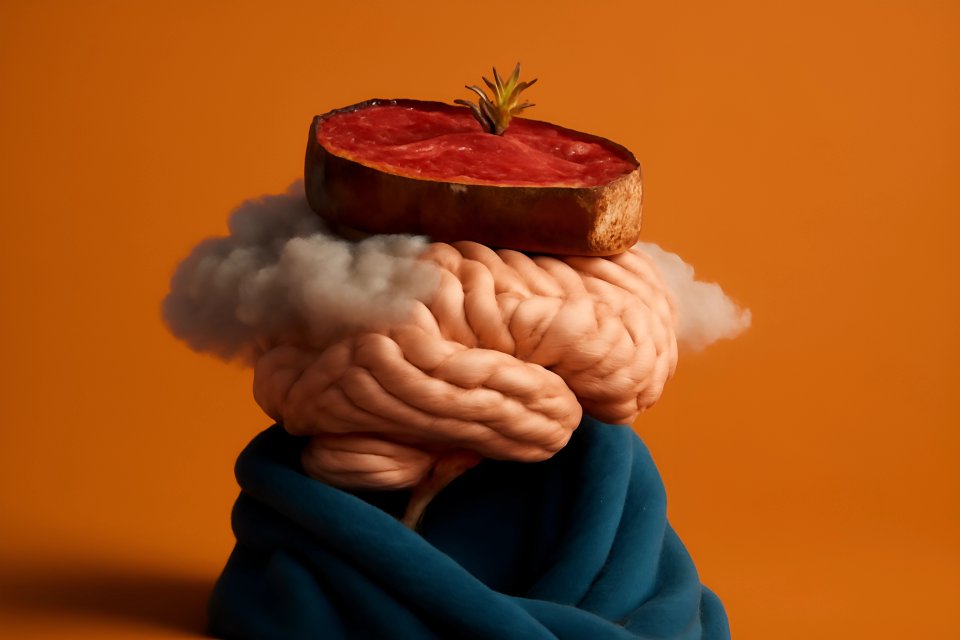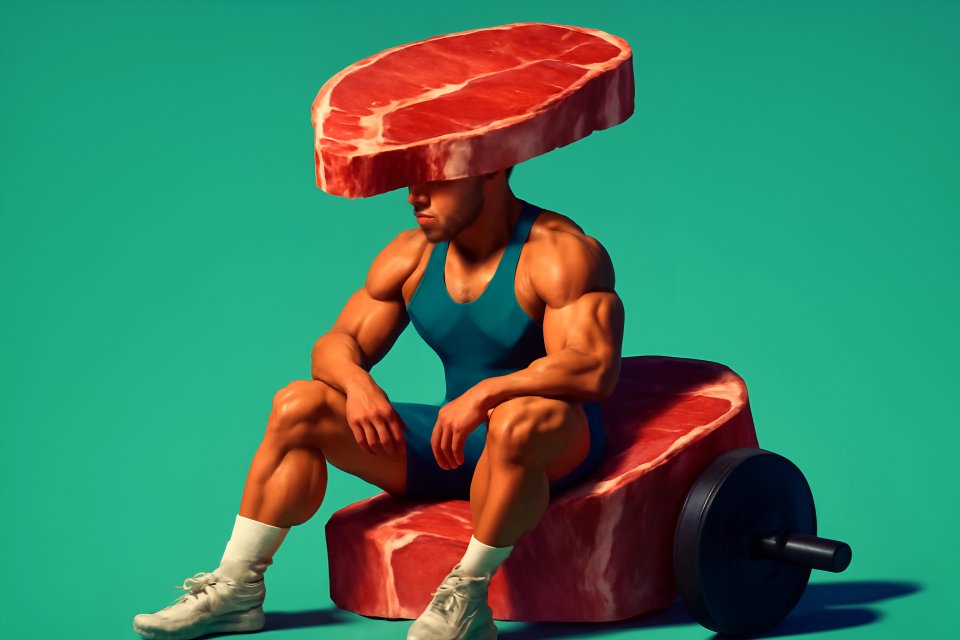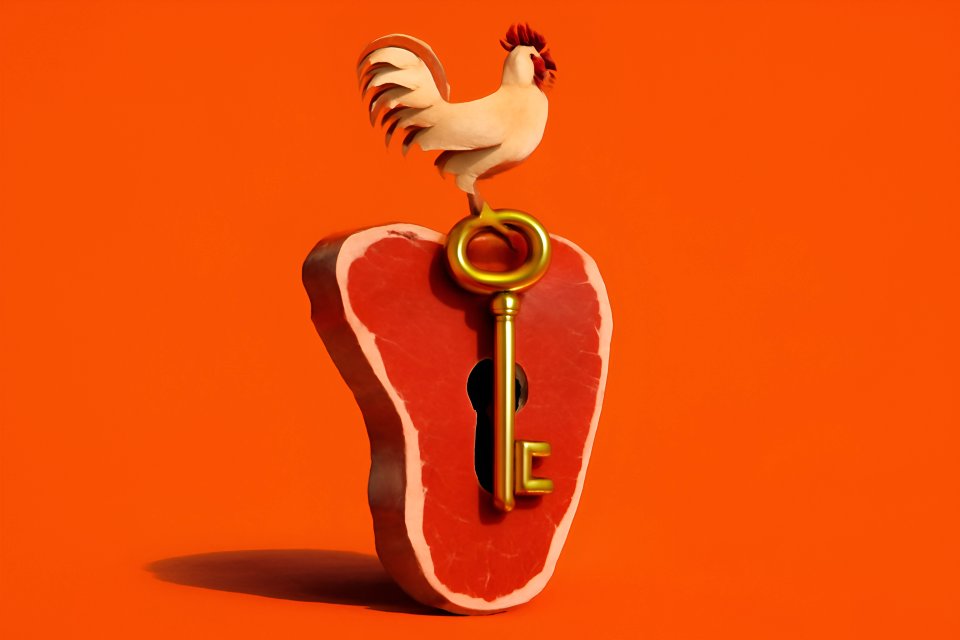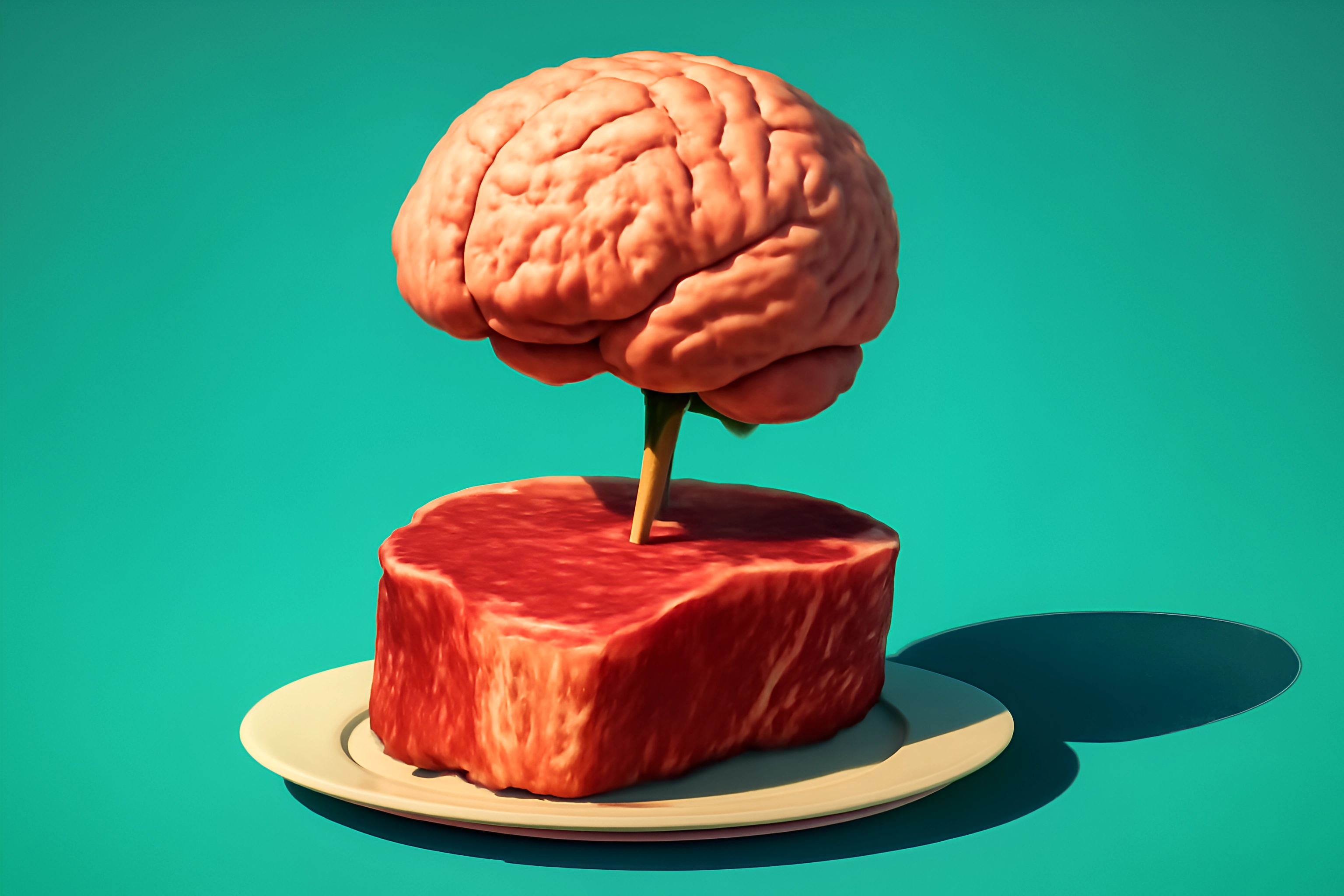
It’s the one question that stops people dead in their tracks. The single biggest fear, whispered in forums and shouted by concerned family members, that holds you back from reclaiming your health: "But what about my cholesterol? Won't all that meat and saturated fat clog my arteries?"
Let’s be honest. This isn't just a random fear; it's a deeply ingrained belief, hammered into our minds for decades by mainstream dietary dogma. We've all seen the charts, heard the warnings, and been told to fear the very foods our ancestors thrived on. At HealingCarnivore, we understand that hesitation, and we’re here to be your trusted guide through the fog of nutritional confusion.
This isn't just another article. This is your liberation from fear. We are going to cut through the noise, dismantle the outdated narratives, and give you a clear, science-backed understanding of what really happens to your cholesterol on a carnivore diet. We're here for some serious myth busting on animal-based nutrition so you can approach your health with confidence, not fear.
Before We Bust the Myths: A Quick Primer on Cholesterol
Cholesterol Isn't the Enemy; It's a Vital Repair Crew
Forget the image of cholesterol as a villainous sludge clogging your pipes. The truth is, cholesterol is one of the most critical substances in your body, essential for your survival and well-being. Every single cell in your body requires it to build and maintain its membrane, and it’s the fundamental building block for vital hormones like testosterone and estrogen. Without it, you couldn't synthesize Vitamin D from sunlight or create the bile acids necessary to digest the healthy fats that fuel your brain and body.
This substance is so crucial that your body doesn't leave its supply to chance. It has a sophisticated manufacturing plant in your liver that produces the vast majority of the cholesterol you need. Far from being a passive enemy, cholesterol is an active and essential part of your internal repair crew, dispatched to sites of injury and inflammation to patch things up.
Thinking of cholesterol as inherently bad is like blaming firefighters for showing up at a fire. It’s not the repair material that’s the problem; it’s the underlying damage that calls it to the scene. This reframe is the first step to understanding why animal-based nutrition can be a powerful tool for hormone balance and energy.
The "Good" vs. "Bad" Cholesterol Misconception (LDL & HDL)
You’ve heard the terms a thousand times: HDL is "good," and LDL is "bad." This oversimplification has caused more confusion than clarity. A better way to think about them is as a transportation system: HDL is the "garbage truck," performing reverse cholesterol transport by collecting excess cholesterol from the body and returning it to the liver, which is why higher HDL levels are considered protective.
LDL, on the other hand, is the "delivery truck," tasked with transporting cholesterol, fats, and fat-soluble vitamins to cells that need them. The truck itself isn't the problem. The danger arises when the truck gets damaged—specifically, when the LDL particle becomes small, dense, and oxidized, often due to high levels of sugar and inflammation in the bloodstream. It's these damaged particles that can more easily penetrate the artery wall and contribute to plaque, not the large, fluffy LDL particles that are common in a healthy, low-carb metabolic state.
Therefore, simply knowing your total LDL number tells you very little about your actual risk. The critical question isn't how many delivery trucks are on the road, but what condition they are in. Understanding the difference between large, buoyant LDL and small, dense LDL is key to accurately assessing your health.
Your Liver is the Real Cholesterol Factory
Did you know that the cholesterol you eat has very little impact on the cholesterol levels in your blood? That’s because your body is smart. Your liver is responsible for producing about 80% of the cholesterol in your system, and it operates on a finely tuned feedback loop.
When you eat more dietary cholesterol from healthy animal foods, your liver simply produces less. When you eat less, it produces more. This endogenous self-regulation is why, for most people, eating cholesterol-rich foods like eggs and red meat doesn't negatively affect blood cholesterol levels.
The idea that you can precisely control your blood cholesterol by avoiding these nutrient-dense foods is a fundamental misunderstanding of human physiology. Your body knows it needs cholesterol to survive and will ensure it has enough, regardless of your diet. The real factors that dysregulate this system are metabolic dysfunction, insulin resistance, and chronic inflammation—the very things a carnivore diet is designed to eliminate.
Carnivore Diet Cholesterol Myths Debunked: Separating Fact from Fiction
Myth #1: Eating Saturated Fat and Cholesterol Will Clog Your Arteries and Cause Heart Disease.
This is the foundational myth of modern nutrition, yet it crumbles under scrutiny. The truth is that context is everything. For decades, saturated fat has been vilified, but large-scale meta-analyses, including one looking at nearly 350,000 subjects, have found no significant evidence linking dietary saturated fat to heart disease. The real danger comes from combining saturated fat with a high-carbohydrate, high-sugar diet, which creates a perfect storm for inflammation and metabolic chaos.
The root cause of atherosclerosis (the hardening of arteries) isn't cholesterol itself, but chronic inflammation that damages the arterial lining. A well-formulated carnivore diet systematically removes the primary drivers of this inflammation: sugar, refined carbohydrates, and industrial seed oils. By doing so, you remove the trigger for plaque formation, allowing your body's cholesterol to do its job of repair without becoming pathogenic.
Furthermore, a carnivore diet often leads to a favorable change in the type of LDL particles in your blood. It promotes a shift away from the small, dense, easily oxidized (Pattern B) particles and toward large, fluffy, harmless (Pattern A) particles. This is a critical distinction that a standard lipid panel won't show, but it's a cornerstone of understanding true carnivore diet heart health.
Myth #2: My LDL Cholesterol Spiked on the Carnivore Diet, So I Must Be in Danger.
So you went carnivore, you feel amazing, but your doctor calls in a panic about your LDL numbers. Sound familiar? This is an incredibly common scenario, and it’s crucial to understand the "why" before jumping to conclusions. Many people who are lean, active, and metabolically healthy on a low-carb or carnivore diet fit a profile known as a "Lean Mass Hyper-Responder" (LMHR).
This phenotype, identified by researchers like Dave Feldman, is characterized by a specific triad of blood markers: LDL cholesterol above 200 mg/dL, HDL cholesterol above 80 mg/dL, and triglycerides below 70 mg/dL. This isn't a sign of disease but rather a sign of a profound shift in your energy metabolism. When you're fat-adapted, your body uses fat for fuel, and LDL particles are the primary vehicles for transporting this fuel (in the form of triglycerides) throughout your body. A high LDL in this context simply reflects a highly efficient fat-based energy system at work.
The key is to look at the complete picture. A high LDL in the context of rock-bottom triglycerides and sky-high HDL presents a completely different, and much lower, risk profile than the high LDL seen in a person with metabolic syndrome. In fact, the Triglyceride-to-HDL ratio is a far more powerful predictor of insulin resistance and heart disease risk than LDL alone. When addressing cholesterol concerns on the carnivore diet, this ratio is one of the most important markers to watch.
Myth #3: You Can't Achieve Optimal Carnivore Heart Health Without Fiber from Plants.
We've been told that fiber is the holy grail for heart health, essential for "scrubbing" cholesterol out of our system. But this narrative conveniently ignores that true cardiovascular health is defined by low inflammation, stable blood sugar, healthy blood pressure, and low triglycerides—all hallmarks of a properly executed carnivore diet. The diet achieves these outcomes by removing inflammatory plant compounds and sugars, which is a far more direct route to heart health than relying on indigestible plant matter.
Animal foods are nutritional powerhouses, packed with nutrients critical for cardiovascular function that are far more bioavailable than their plant-based counterparts. Think of CoQ10 from beef heart for mitochondrial energy, Vitamin K2 from egg yolks and liver to help keep calcium out of your arteries and in your bones, and Taurine and Carnitine from red meat to support heart muscle function. You are not just removing harmful foods; you are replacing them with the most nutrient-dense foods on the planet.
By eliminating anti-nutrients like lectins and oxalates, you also reduce gut inflammation, which has a direct and profound impact on systemic inflammation throughout the body. A calm gut leads to a calm immune system and healthier arteries. The idea that you need plants to protect your heart ignores the fact that reducing diet-induced inflammation is the most powerful lever you can pull for your health.
Beyond the Standard Panel: A Smarter Way to Track Your Heart Health
Look at the Bigger Picture: Key Blood Markers to Track
It's time to stop obsessing over a single, often misleading, number like total LDL. To get a true assessment of your metabolic and cardiovascular health on a carnivore diet, you need to look at a more comprehensive set of markers. These numbers tell a much more complete and accurate story of what's happening inside your body.
Focus on these key indicators:
- Triglycerides: Should be low (ideally under 70 mg/dL).
- HDL: Should be high (ideally over 60 mg/dL).
- Triglyceride/HDL Ratio: This is a powerful proxy for insulin resistance. A ratio under 1.5 is excellent; under 1.0 is optimal.
- hs-CRP (high-sensitivity C-reactive protein): This directly measures inflammation. You want this to be as low as possible (under 1.0 mg/L).
- Fasting Insulin: This shows how hard your body is working to manage blood sugar. A level under 5 µIU/mL is a sign of excellent metabolic health.
For those who are still concerned or fit the LMHR profile, advanced tests can provide even greater peace of mind. A Coronary Artery Calcium (CAC) score directly measures the amount of calcified plaque in your arteries—a zero score is a powerful indicator of very low risk. An NMR LipoProfile test will tell you your LDL particle number (LDL-P) and size, confirming a shift to the benign, fluffy pattern.
Find a Low-Carb Literate Doctor
Walking into a conventional doctor's office with high LDL on a carnivore diet can be a frustrating experience. Many practitioners are trained to see that number in isolation and will immediately recommend statins, without understanding the metabolic context. This is why it is absolutely crucial to find a doctor or practitioner who is literate in low-carb and ketogenic metabolic health.
These professionals understand the physiology of fat adaptation and know to look beyond a standard lipid panel. They will interpret your labs within the context of your overall health—your low inflammation, excellent insulin sensitivity, and vibrant well-being. They won't be alarmed by an elevated LDL when it's accompanied by all the other markers of robust metabolic health.
Don't be afraid to advocate for yourself. Seek out a healthcare partner who supports your journey and is willing to look at the data, not just the dogma. This is a key step in taking control of your health narrative.
Listen to Your Body: The Ultimate Health Marker
Bloodwork is a valuable tool, but it is not the only measure of health. The ultimate proof is how you feel every single day. Are you waking up with clear-headed energy that lasts all day? Has that nagging joint pain finally vanished? Is your mood more stable and your outlook more positive?
These subjective markers are powerful, tangible indicators of deep healing that a lab report can't always capture. When your body is thriving—when inflammation is down, your brain is firing on all cylinders, and you feel better than you have in years—that is the most important data point of all. Trust the profound signals your body is sending you.
This journey is about more than just numbers on a page; it's about reclaiming your vitality and your life. Let your own experience of renewed health be your guide and your greatest source of confidence.
The Verdict: Embrace the Data, Not the Dogma
Let's bring it all home. The fear surrounding cholesterol and the carnivore diet is built on an outdated and incomplete understanding of human metabolism. We've seen that cholesterol is not the enemy, but a vital substance for life. The real villain is chronic inflammation, driven by the very foods a carnivore diet eliminates.
We've learned that context is king. A high LDL in a metabolically sick individual on a standard diet is not the same as a high LDL in a metabolically healthy, fat-adapted individual. By focusing on the bigger picture—your Triglyceride/HDL ratio, inflammation markers, and how you feel—you can gain a true understanding of your health that is far more accurate than a single cholesterol number.
It's time to trade fear for confidence. You have the power to take control of your health, armed with knowledge and the most nutrient-dense foods on the planet. Trust the process, focus on the markers that matter, and feel secure in the nutritional choices you're making for your healing journey. For a deeper dive into other common concerns, our post on the long-term sustainability and nutrient adequacy of the carnivore diet is the perfect next step.
Have you had your cholesterol tested on the carnivore diet? What was your experience? Share your story and support others in the comments below.
